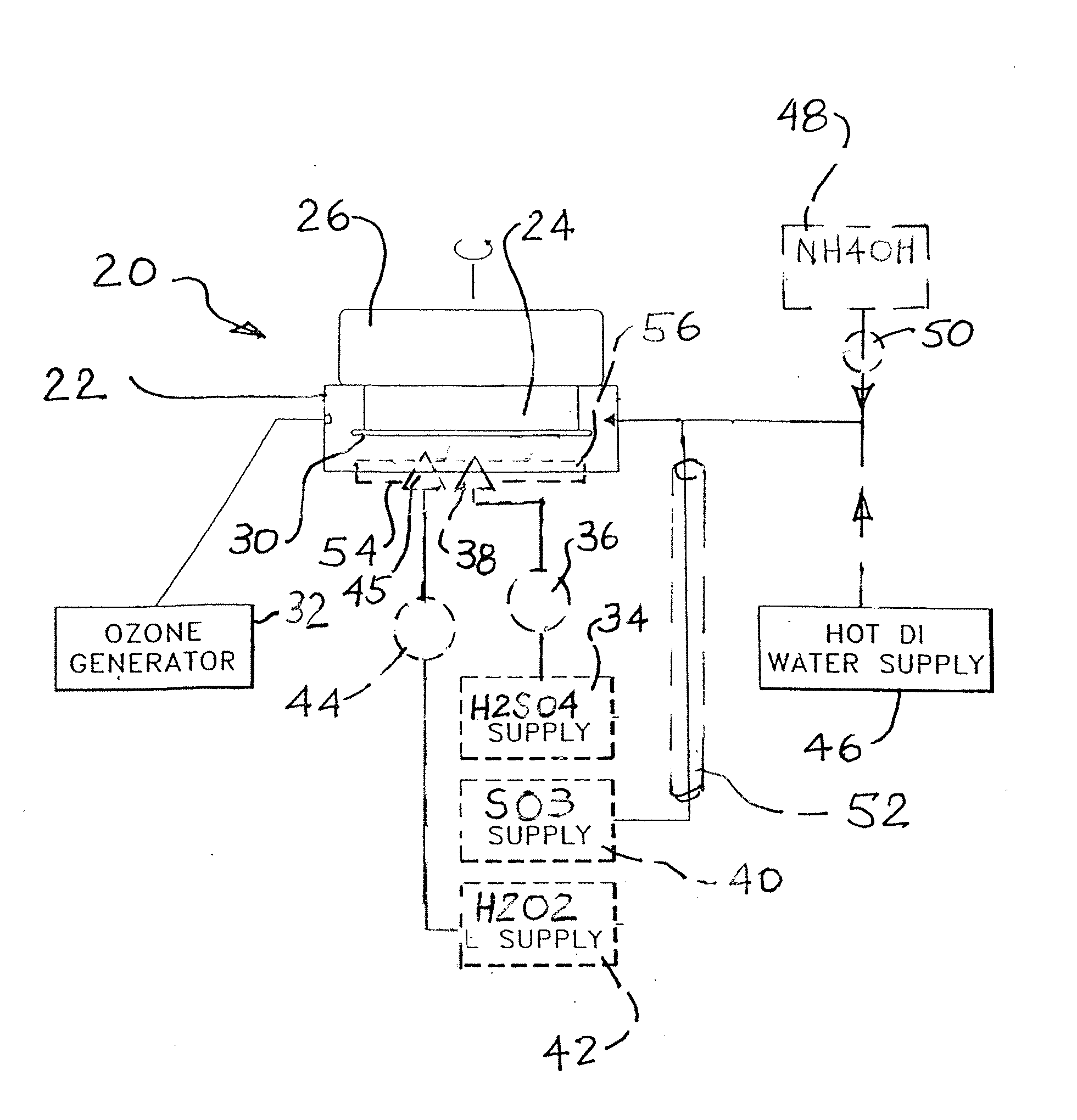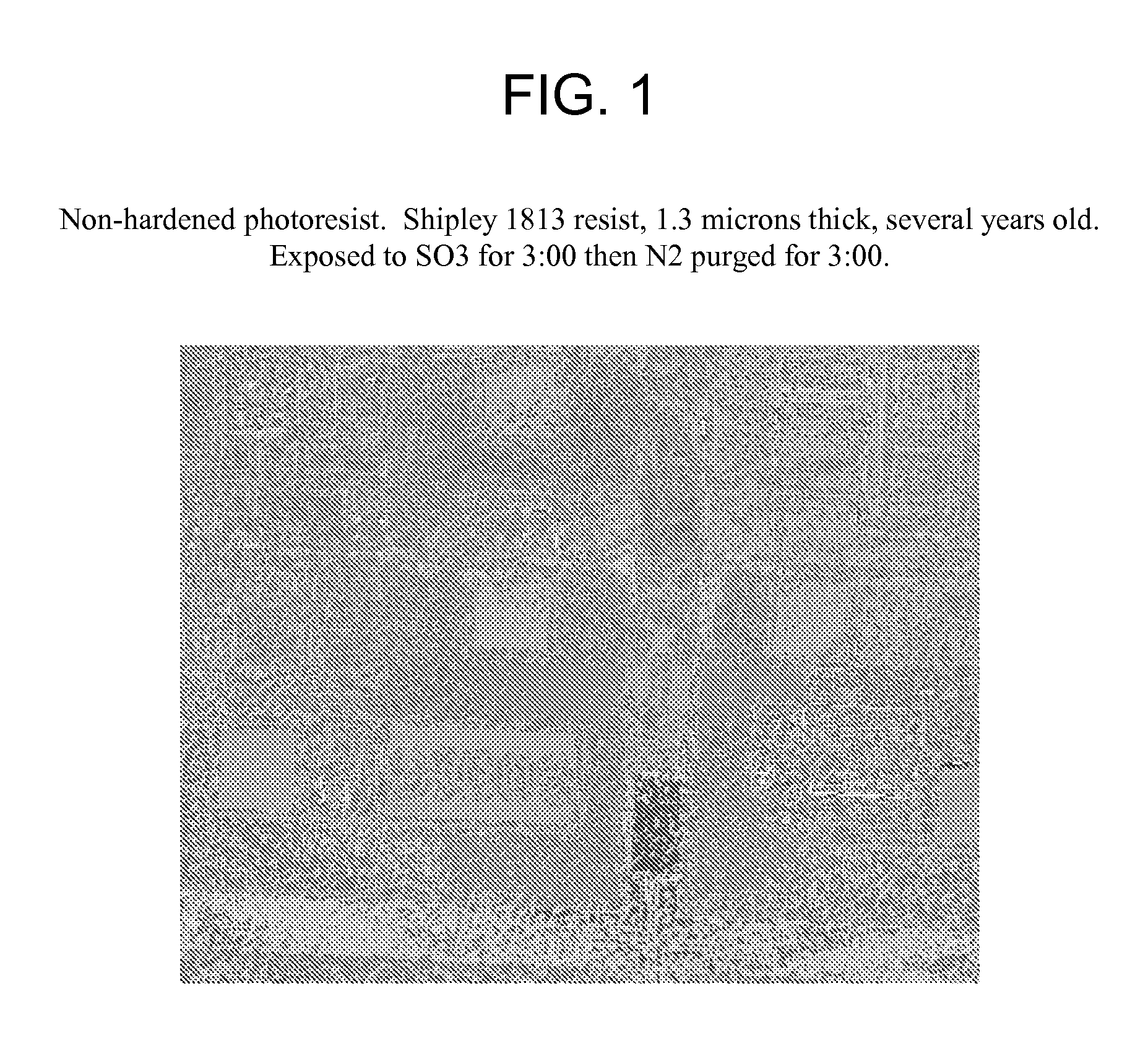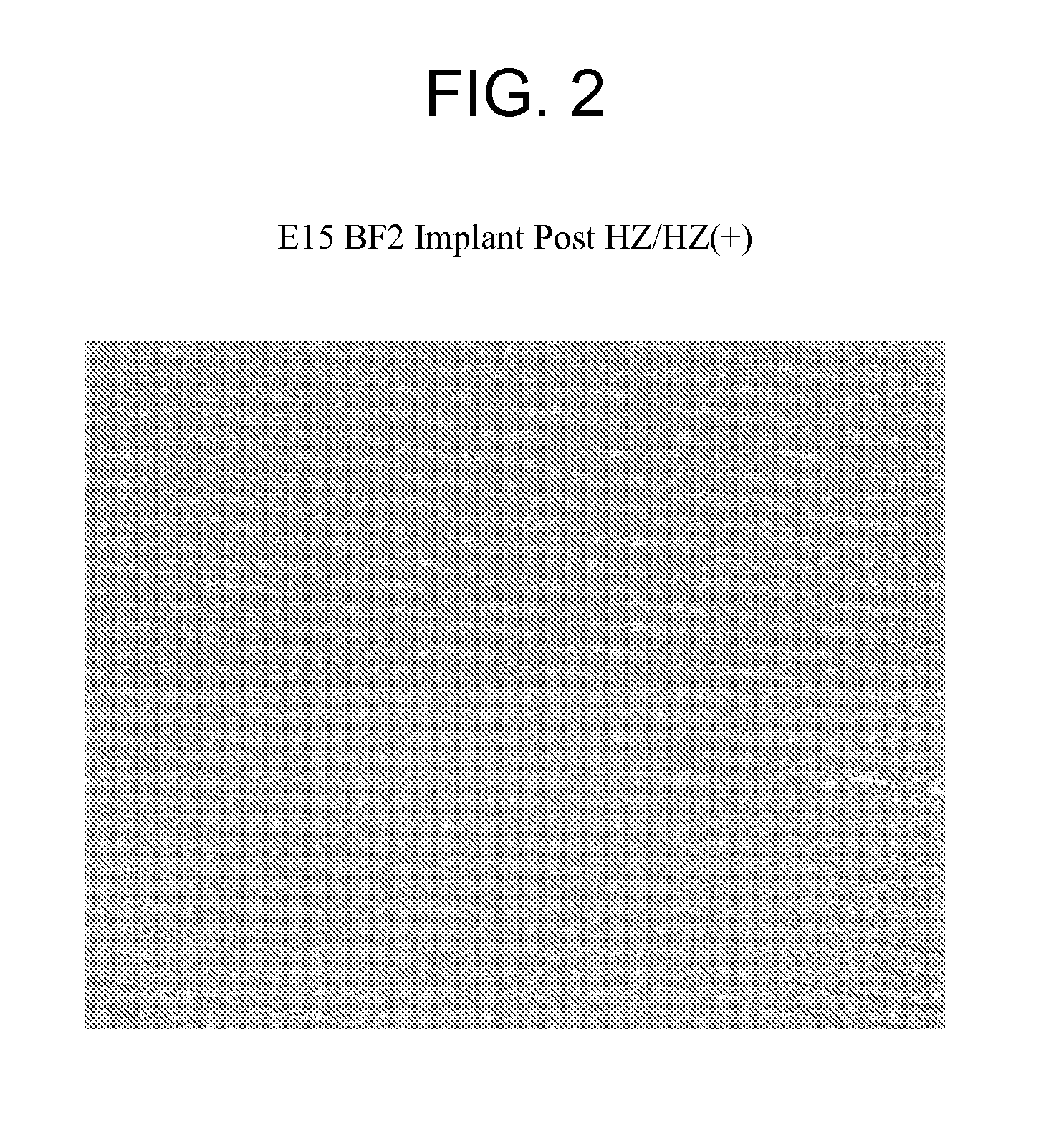Methods for removing photoresist
- Summary
- Abstract
- Description
- Claims
- Application Information
AI Technical Summary
Benefits of technology
Problems solved by technology
Method used
Image
Examples
Embodiment Construction
A. Methods
[0009] 1. Sulfuric Acid and Sulfur Trioxide
[0010] Sulfuric acid (H2SO4), and particularly fuming sulfuric (sulfuric acid in conjunction with sulfur trioxide (SO3)) may be used for stripping photoresist. Fuming sulfuric acid is commonly called oleum and is sulfuric acid with a percentage of sulfur trioxide dissolved in solution. Fuming sulfuric acid may be made by reacting water and SO3, dissolving SO3 in H2SO4 or by applying SO3 already dissolved in H2SO4. If SO3 is used, it may be delivered into an enclosed process chamber either by bubbling a carrier gas through the SO3 or by delivering a pressurized stream of SO3 to the process chamber. The flow rate may typically be in the range of 0.25-10 liters / minute.
[0011] The photoresist on the wafer surface may be initially wetted with water or steam. Spinning the wafer to thin the water film may optionally be used. Even a microscopic wetting of the wafer surface may be advantageous. Water may be supplied prior to or concurrent...
PUM
| Property | Measurement | Unit |
|---|---|---|
| Temperature | aaaaa | aaaaa |
| Temperature | aaaaa | aaaaa |
| Time | aaaaa | aaaaa |
Abstract
Description
Claims
Application Information
 Login to View More
Login to View More - R&D
- Intellectual Property
- Life Sciences
- Materials
- Tech Scout
- Unparalleled Data Quality
- Higher Quality Content
- 60% Fewer Hallucinations
Browse by: Latest US Patents, China's latest patents, Technical Efficacy Thesaurus, Application Domain, Technology Topic, Popular Technical Reports.
© 2025 PatSnap. All rights reserved.Legal|Privacy policy|Modern Slavery Act Transparency Statement|Sitemap|About US| Contact US: help@patsnap.com



